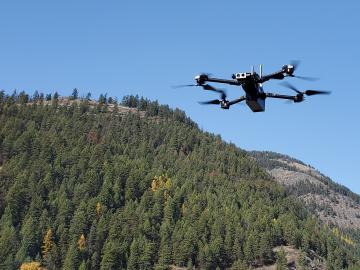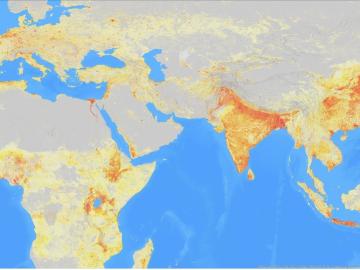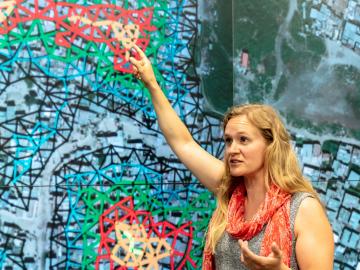
Filter News
Area of Research
- (-) Energy Science (49)
- (-) National Security (31)
- Advanced Manufacturing (2)
- Biological Systems (1)
- Biology and Environment (32)
- Computational Biology (1)
- Computational Engineering (1)
- Computer Science (3)
- Electricity and Smart Grid (1)
- Fusion and Fission (26)
- Fusion Energy (8)
- Isotopes (24)
- Materials (46)
- Materials for Computing (5)
- Neutron Science (25)
- Nuclear Science and Technology (11)
- Quantum information Science (5)
- Sensors and Controls (1)
- Supercomputing (72)
News Type
News Topics
- (-) Artificial Intelligence (17)
- (-) Biomedical (6)
- (-) Clean Water (4)
- (-) Cybersecurity (23)
- (-) Fusion (2)
- (-) Grid (26)
- (-) Isotopes (1)
- (-) Quantum Science (3)
- (-) Security (14)
- 3-D Printing/Advanced Manufacturing (56)
- Advanced Reactors (6)
- Big Data (6)
- Bioenergy (26)
- Biology (12)
- Biotechnology (4)
- Buildings (22)
- Chemical Sciences (13)
- Composites (7)
- Computer Science (31)
- Coronavirus (11)
- Critical Materials (5)
- Energy Storage (49)
- Environment (37)
- Exascale Computing (2)
- Fossil Energy (2)
- Frontier (1)
- High-Performance Computing (8)
- Hydropower (1)
- Machine Learning (15)
- Materials (23)
- Materials Science (19)
- Mathematics (1)
- Mercury (2)
- Microelectronics (1)
- Microscopy (6)
- Molten Salt (1)
- Nanotechnology (8)
- National Security (37)
- Neutron Science (14)
- Nuclear Energy (9)
- Partnerships (16)
- Physics (2)
- Polymers (6)
- Simulation (2)
- Space Exploration (1)
- Summit (5)
- Transportation (39)
Media Contacts

When Hurricane Maria battered Puerto Rico in 2017, winds snapped trees and destroyed homes, while heavy rains transformed streets into rivers. But after the storm passed, the human toll continued to grow as residents struggled without electricity for months. Five years later, power outages remain long and frequent.

As climate change leads to larger and more frequent wildfires, researchers at ORNL are using sensors, drones and machine learning to both prevent fires and reduce their damage to the electric grid.

When the COVID-19 pandemic stunned the world in 2020, researchers at ORNL wondered how they could extend their support and help

Though Nell Barber wasn’t sure what her future held after graduating with a bachelor’s degree in psychology, she now uses her interest in human behavior to design systems that leverage machine learning algorithms to identify faces in a crowd.

ORNL scientists will present new technologies available for licensing during the annual Technology Innovation Showcase. The event is 9 a.m. to 3 p.m. Thursday, June 16, at the Manufacturing Demonstration Facility at ORNL’s Hardin Valley campus.

How an Alvin M. Weinberg Fellow is increasing security for critical infrastructure components

It’s a simple premise: To truly improve the health, safety, and security of human beings, you must first understand where those individuals are.

A team of researchers has developed a novel, machine learning–based technique to explore and identify relationships among medical concepts using electronic health record data across multiple healthcare providers.

Unequal access to modern infrastructure is a feature of growing cities, according to a study published this week in the Proceedings of the National Academy of Sciences

ORNL and the Tennessee Valley Authority, or TVA, are joining forces to advance decarbonization technologies from discovery through deployment through a new memorandum of understanding, or MOU.


